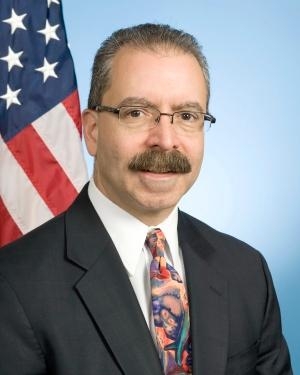Veteran Program Manager Orlando Figueroa Tapped For The
Post
NASA's associate administrator for the Science Mission
Directorate, John Grunsfeld, has named former veteran NASA program
manager Orlando Figueroa to lead a newly established Mars Program
Planning Group (MPPG) tasked to reformulate the agency's Mars
Exploration Program. Figueroa's first assignment is to develop a
draft framework for review by March 15.

Grunsfeld made the announcement at an annual gathering of Mars
scientists and engineers in Dulles, VA, Figueroa (pictured), a
consultant with more than 30 years of aerospace experience, will
lead the scientific and technical team to develop an integrated
strategy for NASA's Mars Exploration Program in light of current
funding constraints. The team's initial focus will be on a possible
2018-2020 robotic mission. The program's official framework will be
developed in consultation with the science community and
international partners and is expected to be released for full
review as early as this summer.
"The team will develop a plan that advances the priorities in
the National Research Council's Decadal Survey, which puts sample
return as the top scientific goal, and leverages NASA's research in
enabling technology," Grunsfeld said. "Our investments in the new
Mars program will incorporate elements of advanced research and
technologies in support of a logical sequence of missions to answer
fundamental scientific questions and ultimately support the goal of
sending people to Mars."
The MPPG will report to Grunsfeld, a physicist and five-time
flown space shuttle astronaut. Grunsfeld is chairing the overall,
agency-wide reformulation strategy along with William Gerstenmaier,
associate administrator for the human exploration and operations
directorate, NASA Chief Scientist Waleed Abdalati and NASA Chief
Technologist Mason Peck. The MPPG will ensure that America
maintains the critical technical skills developed over decades
needed to achieve the highest priority science and exploration
objectives.

NASA has a recognized track record of successful Mars missions.
The rover Opportunity, which landed on Mars in 2004, is still
operating despite an official mission timeline of 90 days. There
are also two NASA satellites orbiting the Red Planet; the Mars
Reconnaissance Orbiter and Mars Odyssey. The duo continue to return
unprecedented science data and images. This August, NASA will land
the Mars Science Laboratory, "Curiosity," on the planet's surface.
This roving science laboratory will assess whether Mars was or is
today an environment able to support life. In 2013, NASA will
launch the Mars Atmosphere and Volatile Evolution orbiter, the
first mission devoted to understanding the Martian upper
atmosphere.
NASA will continue to gather critical information to help
scientists understand the Red Planet. These data will be used in
future years to meet President Obama's challenge to send humans to
Mars in the mid-2030s.
"We'll look at all of the assets NASA is developing to reach,
explore and study Mars, as well as spacecraft at or on its way to
Mars," Figueroa said.

NASA already has been developing technology that will improve
precision in landing, the ability to conduct scientific analysis
remotely, handle and collect samples, and transmit larger volumes
of data back to Earth.
"The science and engineering communities have worked
continuously over a decade to define our knowledge gaps for Mars
exploration, so we have a solid starting point," Grunsfeld
said.
Mars exploration is a top priority for NASA. America's
investment in exploring Mars during the past decade totals $6.1
billion. NASA Administrator Charlie Bolden directed Grunsfeld to
lead the agency-wide team in order to optimize a coordinated
strategy of Mars exploration and continue America's leadership role
in the exploration of the Red Planet within available future
budgets. (Images provided by NASA)
 ANN's Daily Aero-Term (04.26.24): DETRESFA (Distress Phrase)
ANN's Daily Aero-Term (04.26.24): DETRESFA (Distress Phrase) ANN's Daily Aero-Linx (04.26.24)
ANN's Daily Aero-Linx (04.26.24) Airborne 04.22.24: Rotor X Worsens, Airport Fees 4 FNB?, USMC Drone Pilot
Airborne 04.22.24: Rotor X Worsens, Airport Fees 4 FNB?, USMC Drone Pilot Airborne 04.24.24: INTEGRAL E, Elixir USA, M700 RVSM
Airborne 04.24.24: INTEGRAL E, Elixir USA, M700 RVSM Airborne-NextGen 04.23.24: UAVOS UVH 170, magni650 Engine, World eVTOL Directory
Airborne-NextGen 04.23.24: UAVOS UVH 170, magni650 Engine, World eVTOL Directory





